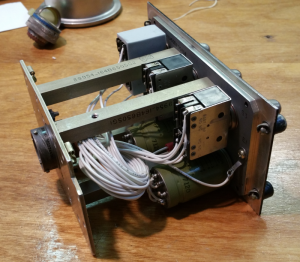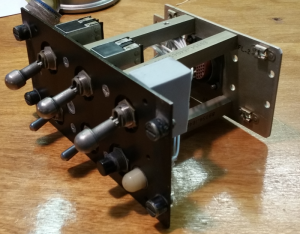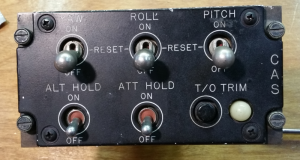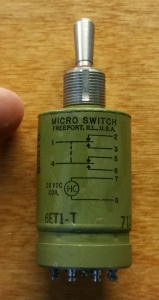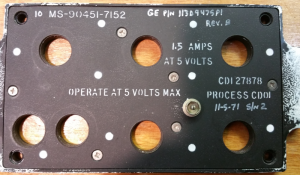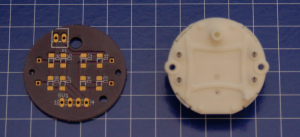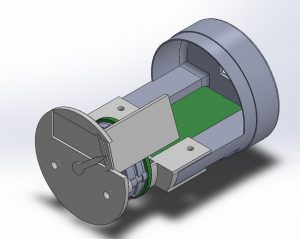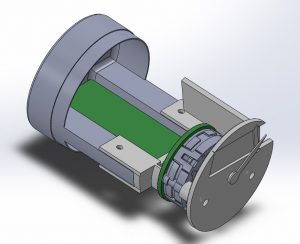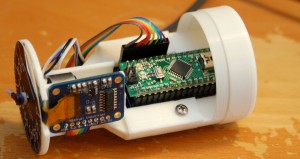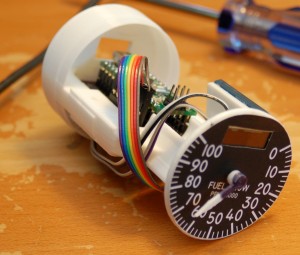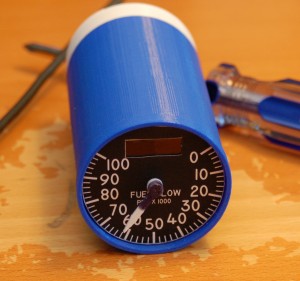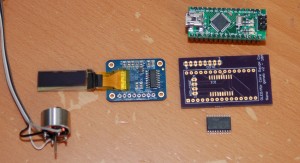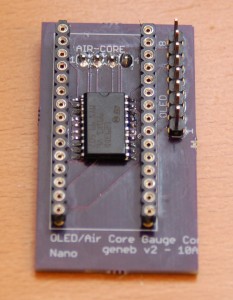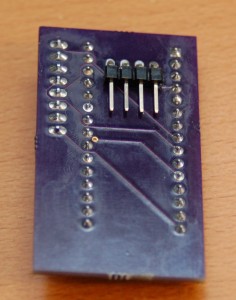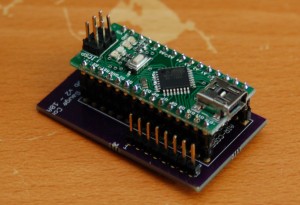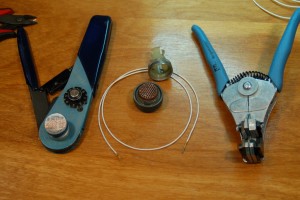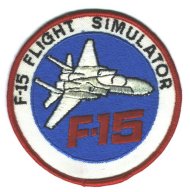If you look above this post, you’ll see a new tab – “Library”. This is where I’m starting to put scans of “official” documentation and literature that I’ve got on the F-15. The first two volumes of Eagle Talk are up already. I’ve got vols III and IV to scan, and those will go up as soon as I can get them scanned. It may be a slow process as running the book scanner enrages my carpal tunnel something fierce. 🙁
[Update 03May19]
Volumes III and IV are scanned and available for download. If you have later volumes, please contact me! I’d love to add them to the collection.
So basically, my plans to live stream work on the cockpit fell victim to two things.
1. I was WAY too busy. I’ve been pushing hard to finish improvements to a small “woodworking” shop that used to be a horse barn. That process is about 85% complete, but still continues to consume both my available resources and time.
2. I’ve learned that I really (and I mean REALLY) suck at live streaming. I tend to ramble and when I start concentrating on a task, I stop talking. This is not conducive to an entertaining (or even interesting) live stream.
I’ve managed to get a little bit more work done on the APG-70(v) radar panel after leaving it to sit on the bench for nearly 2 years. I’m in the process of building a DIY wire cutting machine and that will make the panel a lot less hassle to finish.
More (relatively) soon!
I’ve been looking into doing live streaming of the panel rebuild work on the F-15. Basically this would be a live stream of me working out the panel wiring, wiring up the connectors and adding the harnesses to the main side console harness.
I’d be narrating what I’m doing as well as answering questions from folks over chat – I’ll be using Twitch to handle the stream.
I’ll likely start doing this on Saturdays at noon(ish) and the stream will run until I get tired of working on the “panel of the day”. 😉
When I firm up a schedule, I’ll post information here as well as in the “usual” places, such as SimHQ, the simpits-tech mailing list and likely Facebook.
See you then!
Last Saturday I took some time do de-pin the cannon plug in preparation for rebuilding the CAS panel. This weekend I finally got around to getting that panel rebuilt and wired into the left side console harness.
Here’s a few pics of the rebuilt panel assembly:
The CAS panel is interesting in that it’s got a pair of magnetically held toggle switches. It’s essentially a relay that’s designed with a very heavy spring to keep it open unless the coil is holding it closed. Here’s what one looks like:
At some point I’ll post the little video I did that shows how the switch operates.
It turns out that I may have a pretty special CAS panel. I noticed the manufacture date & serial number on the back of the edge-lit panel:
The date is November 5th, 1971 with a serial # of 2. This makes me think that the panel may be from one of the original test articles that MD built, but I’m not sure. I’ll update this post if I find out more information.
I spent quite a while working on getting the air core motors to work properly. The biggest issue was the sound they made due to the PWM signal resonating in the instrument shell. I did get the sound to go away, but at the required frequency the motor would no longer move properly. This lead me to look into other methods I could use that would still fit into a 2″ MS33639 instrument shell.
Many years ago I briefly looked into the micro stepper motors made by Switec. They were fairly new on the scene and were nice, but expensive motors. Fast forward about 12 years and I find that you can obtain these motors for as little as $2.50 each! (lot of 25 on eBay) My search for more information on the motor led me to an Arduino project where the goal was to use these steppers in various projects. The cool thing is that due to the low power consumption of the coils, they could be directly driven from an Arduino without the need for an h-bridge chip! (20mA per coil) The blog entry that I found is here: http://guy.carpenter.id.au/gaugette/2012/01/05/what-is-gaugette/ – I’d recommend you read the rest of his blog – there’s a ton of great information on using Switec motors, including with a Raspberry Pi.
I did a bit more research and found a demonstrator project on Tindie that used a Switec motor – https://www.tindie.com/products/TheRengineer/analog-gauge-stepper-breakout-board. The board allowed for easy connection to an Arduino and included clamping diodes to prevent back-EMF from doing damage to the Arduino. Since the board was way too large for my needs, I re-designed it to use surface mount diodes (LL4148) and reduced the size of the board to match the diameter of a Switec motor.
The 4 pin connector along the bottom is for the two coils in the motor and the 2 pin connector at the top is for the 5v reference voltage for the diodes.
I revised my gauge code to use the Switec X25 library and it works great! The motor I’m using is the X27.168 and has an internal stop. The 2″ gauges in the F-15 don’t require more than 300 degrees of rotation at the most, so this is a perfect choice – it allows me to rotate backwards to hit the stop and then start from a known point. The idea being to use the stop in lieu of a “home” position detector.
Unfortunately, changing to the Switec motor required that I completely re-design the “middle” section of the gauge.
Here’s the result of that redesign:
The resulting assembly is going to be roughly 3/4″ shorter than the original, air-core based design. I’m currently printing the new components as I write this. The photo below is the new center mating clip.
This part attaches to the back half of the instrument using two screws. It is connected to the motor and instrument face using a pair of 0-80 screws that pass through the stepper motor and end up in heat-set inserts installed in the standoffs on the instrument face.
I also got the chance to get the finishing touches done on the gauge face graphics. I had them printed up on 120lb card stock at Staples:
 The plan is to cut them out on the laser and then glue them to the gauge faces after assembly. I had enough made to ensure that I’ll have spares when I inevitably screw one up. 🙂 I really like how they turned out!
The plan is to cut them out on the laser and then glue them to the gauge faces after assembly. I had enough made to ensure that I’ll have spares when I inevitably screw one up. 🙂 I really like how they turned out!
Thanks for reading!
I finally had the time to come back to the gauge and get the firmware finished!
I had somehow managed to do damage to the Arduino Nano such that you couldn’t upload firmware to it using the “normal” method in the Arduino IDE. Turns out I’d blow the rxdata line going into the ATMega 328 MCU on the board. 🙁 The good news is that I’ve got it replaced and the firmware is done. Next step is to make some high quality faces, new needles and new instrument shells.
Here’s an interesting bit of trivia for you – the F-15C can consume up to 150,000lbs of fuel per hour at low altitude and in full afterburner. That’s right around 22,000 gallons of fuel per hour! Those F100-PW-220 engines are hungry! 🙂
So the printed circuit boards mentioned in the previous entry have been put to work!
The gauge shown here is the core that I’ll build the six 2″ engine gauges out of.
Here’s what the gauge looks like on the inside. All the plastic components (the white bits) are 3D printed on my SeeMeCNC Rostock MAX v1, Orange Menace.
Here’s how it looks with the “test” case on it:
Finally, here’s a short video of the gauge in operation:
Once I have the time, a properly sized case will be printed (the blue one is too short) and I’ll get a good laser engraved face on the gauge.
It’s coming along! 🙂
[Here are the gauge electronic components, sans header connectors]
I’ve recently been working on getting the six engine gauges for the F-15 put together. Since I’m not going to be using real instruments, I needed to scratch build them. Last year I did a short demo that shows how I’m using a small OLED display to emulate the “odometer” style display that’s used in the Fuel Flow, Temperature and RPM gauges. I finally got around to doing the software integration and did a short video that shows both the air core and the OLED display working together:
Some weeks later, the boards I ordered from Osh Park arrived and I got the first one soldered up.
This is the top of the new interface board. The chip in the center is an LM293DD dual h-bridge chip. This is the surface mount version of the LM293D that I bread-boarded the circuit on. The header on the right goes to the OLED interface.
The bottom of the board has a four pin connector that will go to the air core motor.
This is what the final assembly looks like after the Arduino Nano has been mounted.
The USB connector is at the back end of the board and will be accessed through an opening in the back of the instrument. I’m still working on the design for the instrument core, so I don’t have much else to show yet.
More soon!
I don’t know if this update qualifies as a “milestone” or not, but I finally finished and installed the wiring harness for the right side console!
The adventure started this morning with the construction of the wiring harness for the recently finished TEWS panel. This consisted of cutting, stripping and adding pins & sockets to the 22 wires that are used by the TEWS panel.
Wow. It’s been a while since I’ve posted an update! Since the last update, I’ve nearly finished the re-wire job for the right side console. I was fortunate enough to get a pile of brand new canon plugs and matching pins. This is allowing me to re-wire the cockpit using the original bulkhead connections, which makes for a much neater build! In order to build the wiring harness, I’ve had to build it out panel by panel. With the completion of the TEWS panel, the wiring harness will be completed. The only thing missing will be the CMD panel that controls how the chaff & flare dispensers behave. I’ve never been able to get a photo of that panel, so I’m going to hold off until I do and can make a new one from scratch.
The navigation control panel is going to be a stand-alone, USB interfaced device due to its complexity. That should be an interesting rebuild.
I started the TEWS panel rebuild nearly 3 years ago, which is kind of embarrassing. In my defense, I DO have a lot going on. There’s good reasons it’s been 15 years since this project started. 🙂
When I first wrote about the TEWS panel, I pointed out that I needed to replace the two destroyed Korry “FAIL” indicators that the panel had. I decided to go a different route than the Korry replacement I built for the IFF panel.


